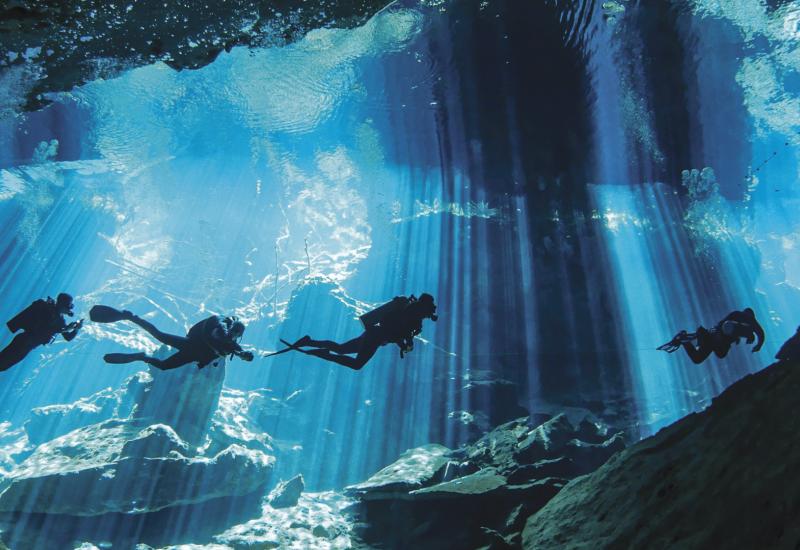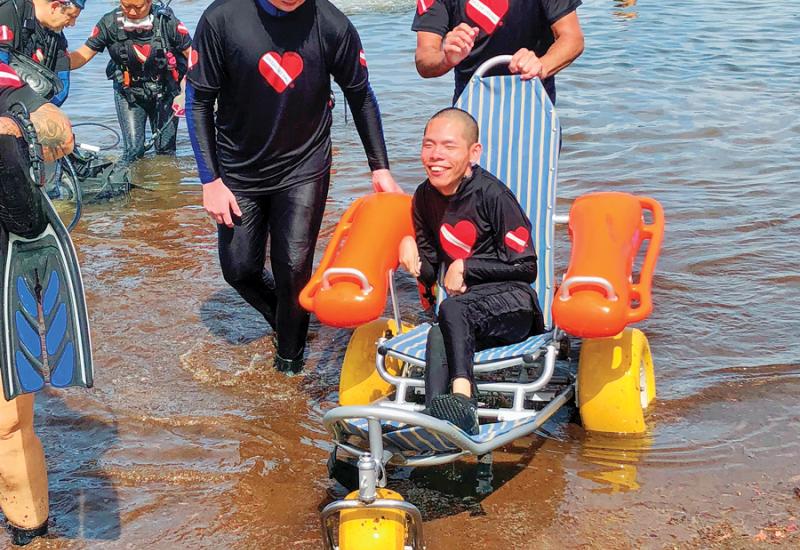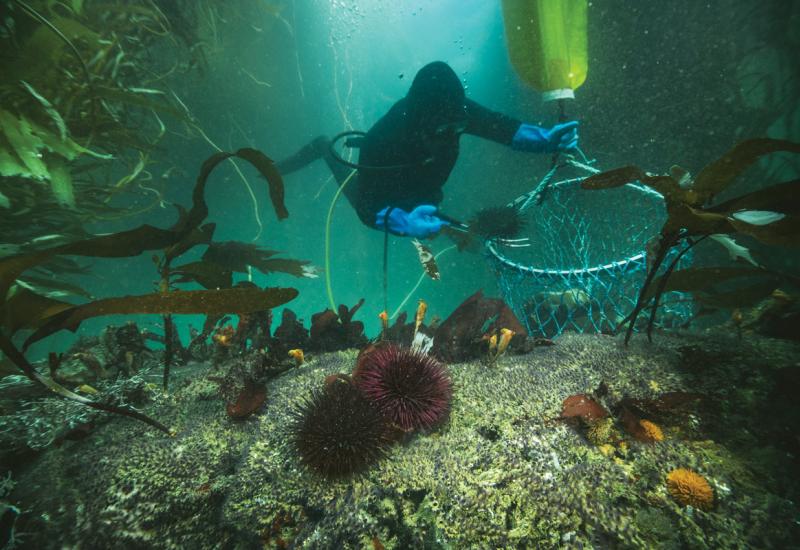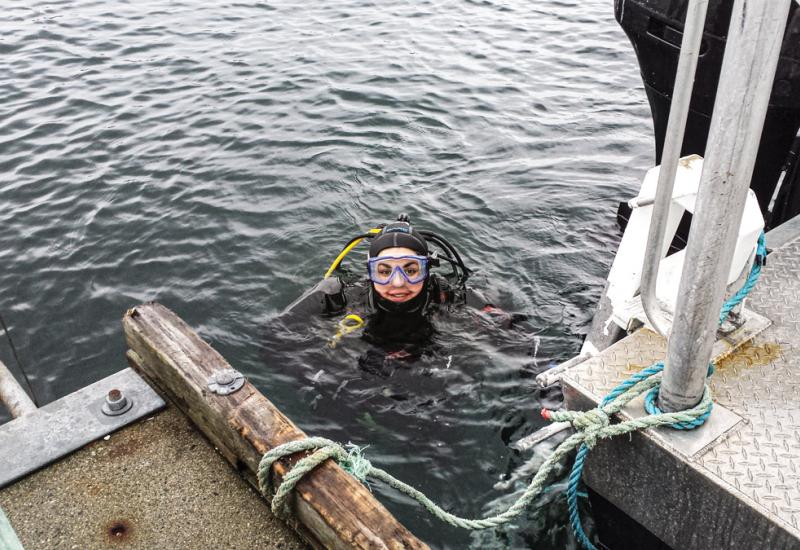New Navy Dive Mask Will Be "Like Google Glass On Steroids"
The Mark V helmet defined an era for military and salvage divers, and now, on the centennial of the historic device, the U.S. Navy has developed a prototype that stands to revolutionize diving yet again. The innovative gadget is a full-face mask with a see-through head-up display that provides critical information to its wearer at eye level — even in zero-viz conditions. Think of it as a binocular Google Glass on steroids. The mask is still in the developmental stage, but four functioning models have already been built, and the technology will be used in dive helmets as well.
“It’s disruptive technology — a game-changer,” says Dennis Gallagher, project engineer for the Naval Surface Warfare Center Panama City Division’s Underwater Systems Development Branch. Essentially, these Navy masks will do to flip-down displays what Apple did to the flip phone.
Currently, military and commercial divers view information from imaging sonars, mapping systems and other devices using a flip-down binocular display attached to their mask or helmet. Gallagher says these systems “are game-changers in themselves,” but the new masks will make the same information — and maybe more — available with a tap of the finger.
“Taking this technology to the next level and integrating its capability right into a dive mask or helmet means you’ve eliminated the need for a lot of different gauges and displays,” Gallagher says. “Everything you need — whether it’s decompression information, high-resolution sonar, mapping, compass navigation or encrypted text messages that are being sent to the diver — any kind of data information, visually, that the diver can make use of can theoretically be displayed in the mask.”
The head-up information display is transformative for military and public-safety divers, who require clear, visual access to information while working in zero visibility — what they call “diving by Braille.”
British and U.S. Navy divers have already tested the prototypes, and Gallagher says their reactions to the mask have been overwhelmingly positive.
Early prototypes of the HUD dive mask displayed black-and-white information in the form of letters and numbers, but Gallagher says the system currently in development can display full-color, high-resolution images — including 3-D augmented reality.
It will be two to three more years before the new see-through HUD masks and helmets are ready for military production, and technology transition to the commercial and recreational diving communities.
“Can you imagine getting in your time machine — or your TARDIS, if you’re a big Doctor Who fan — and being able to bring a diver forward and say, ‘Look what we can do now’?” says Gallagher.
MARK V CENTENNIAL
Though the U.S. Navy Mark V helmet was not produced and distributed to military divers until 1917, the 2015 centennial celebrates the anniversary of the mask’s original design. The framework for the iconic helmet was designed by Navy gunner George D. Stillson, and was the standard for military and salvage divers for roughly 70 years, during which time its design was largely unchanged. Also, 2015 has been dubbed the Year of the Military Diver, as it marks the 35th anniversary of the U.S. Naval Diving and Salvage Training Center; the 70th anniversary of NSA Panama City and Naval Surface Warfare Center Panama City Division; and the 40th anniversary of the Navy Experimental Diving Unit’s move from the Washington Navy Yard to Panama City, Florida.
More Dive Technology:
Epic Underwater Exosuit | Bite-Proof Shark Suit | Hot New Dive Watches
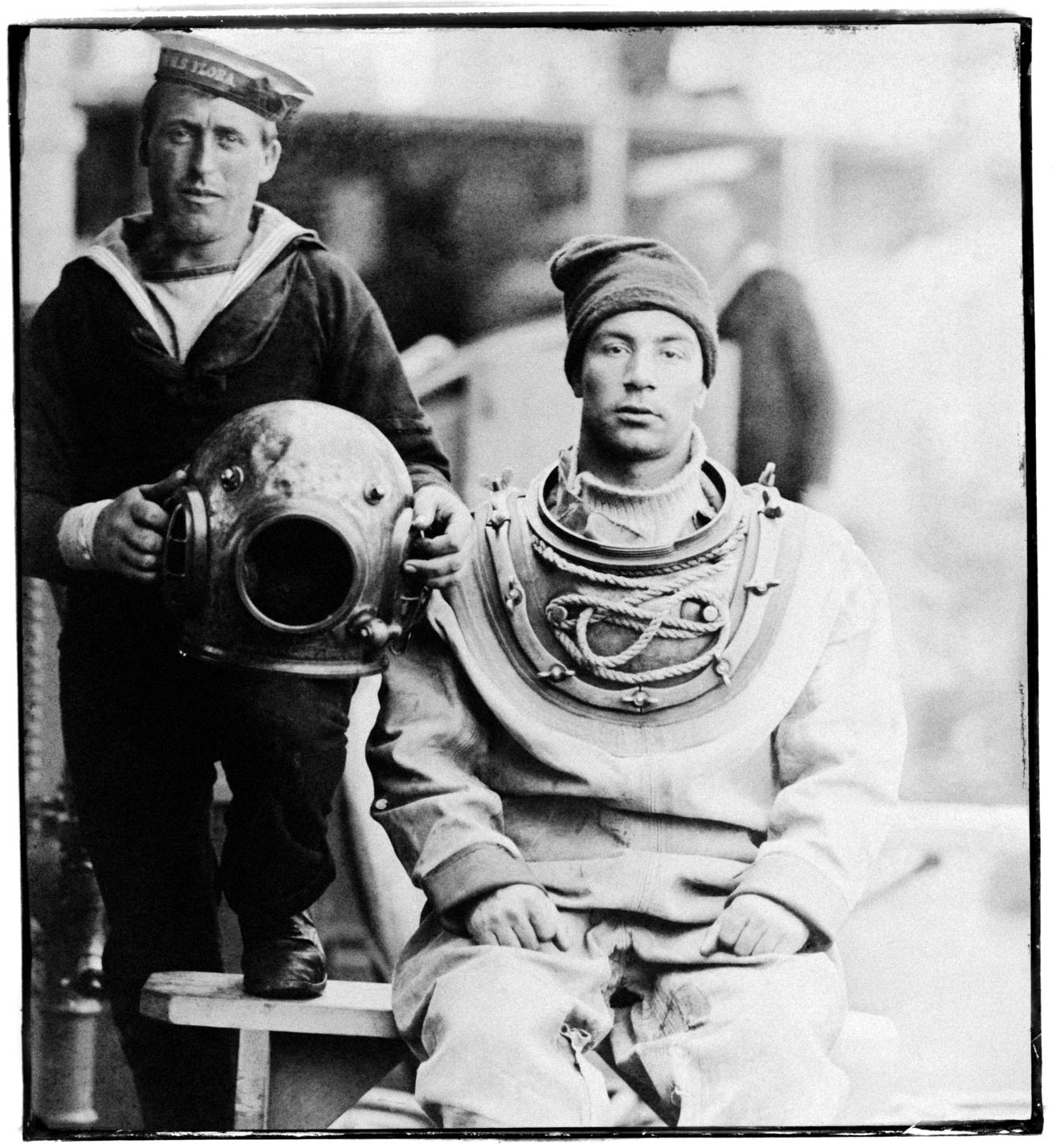
Simon DownhamThis year marks the 100th anniversary of the original design for the iconic Mark V dive helmet.
The Mark V helmet defined an era for military and salvage divers, and now, on the centennial of the historic device, the U.S. Navy has developed a prototype that stands to revolutionize diving yet again. The innovative gadget is a full-face mask with a see-through head-up display that provides critical information to its wearer at eye level — even in zero-viz conditions. Think of it as a binocular Google Glass on steroids. The mask is still in the developmental stage, but four functioning models have already been built, and the technology will be used in dive helmets as well.
“It’s disruptive technology — a game-changer,” says Dennis Gallagher, project engineer for the Naval Surface Warfare Center Panama City Division’s Underwater Systems Development Branch. Essentially, these Navy masks will do to flip-down displays what Apple did to the flip phone.
Currently, military and commercial divers view information from imaging sonars, mapping systems and other devices using a flip-down binocular display attached to their mask or helmet. Gallagher says these systems “are game-changers in themselves,” but the new masks will make the same information — and maybe more — available with a tap of the finger.
“Taking this technology to the next level and integrating its capability right into a dive mask or helmet means you’ve eliminated the need for a lot of different gauges and displays,” Gallagher says. “Everything you need — whether it’s decompression information, high-resolution sonar, mapping, compass navigation or encrypted text messages that are being sent to the diver — any kind of data information, visually, that the diver can make use of can theoretically be displayed in the mask.”
The head-up information display is transformative for military and public-safety divers, who require clear, visual access to information while working in zero visibility — what they call “diving by Braille.”
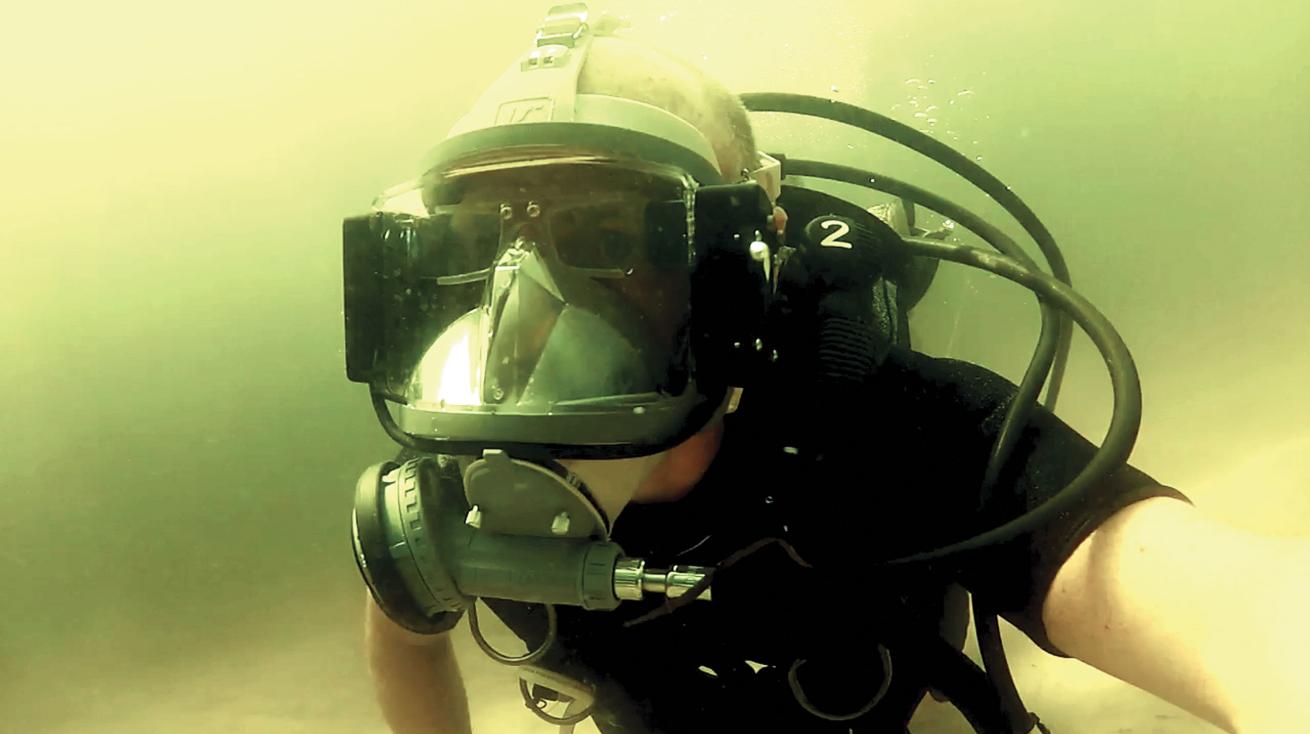
Courtesy Anthony BleichnerThe Navy’s full-face mask prototype will work like Google Glass for divers.
British and U.S. Navy divers have already tested the prototypes, and Gallagher says their reactions to the mask have been overwhelmingly positive.
Early prototypes of the HUD dive mask displayed black-and-white information in the form of letters and numbers, but Gallagher says the system currently in development can display full-color, high-resolution images — including 3-D augmented reality.
It will be two to three more years before the new see-through HUD masks and helmets are ready for military production, and technology transition to the commercial and recreational diving communities.
“Can you imagine getting in your time machine — or your TARDIS, if you’re a big Doctor Who fan — and being able to bring a diver forward and say, ‘Look what we can do now’?” says Gallagher.
MARK V CENTENNIAL
Though the U.S. Navy Mark V helmet was not produced and distributed to military divers until 1917, the 2015 centennial celebrates the anniversary of the mask’s original design. The framework for the iconic helmet was designed by Navy gunner George D. Stillson, and was the standard for military and salvage divers for roughly 70 years, during which time its design was largely unchanged. Also, 2015 has been dubbed the Year of the Military Diver, as it marks the 35th anniversary of the U.S. Naval Diving and Salvage Training Center; the 70th anniversary of NSA Panama City and Naval Surface Warfare Center Panama City Division; and the 40th anniversary of the Navy Experimental Diving Unit’s move from the Washington Navy Yard to Panama City, Florida.
More Dive Technology:
Epic Underwater Exosuit | Bite-Proof Shark Suit | Hot New Dive Watches

